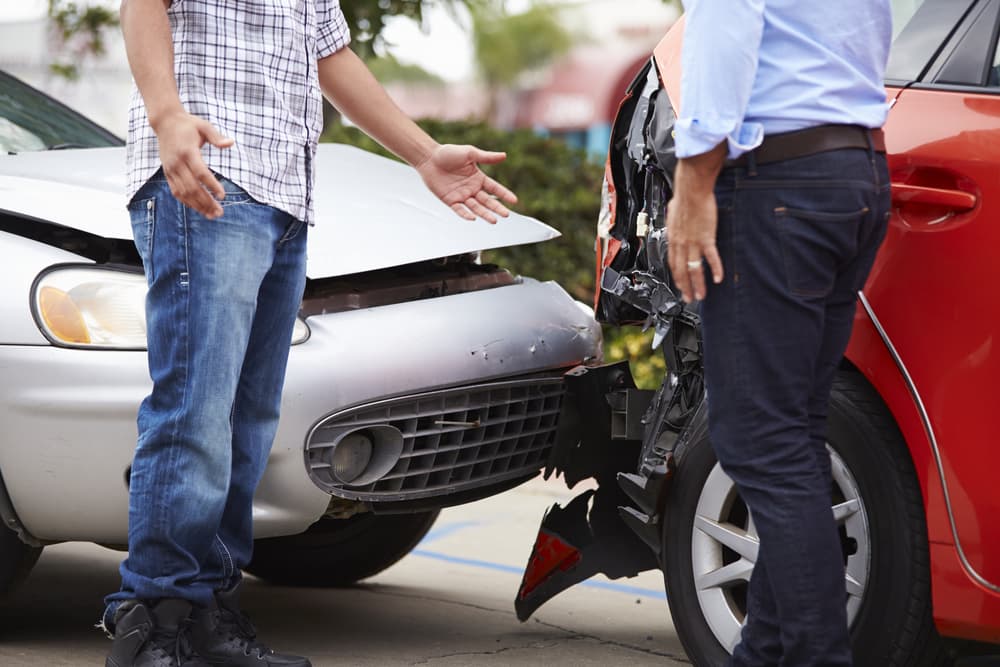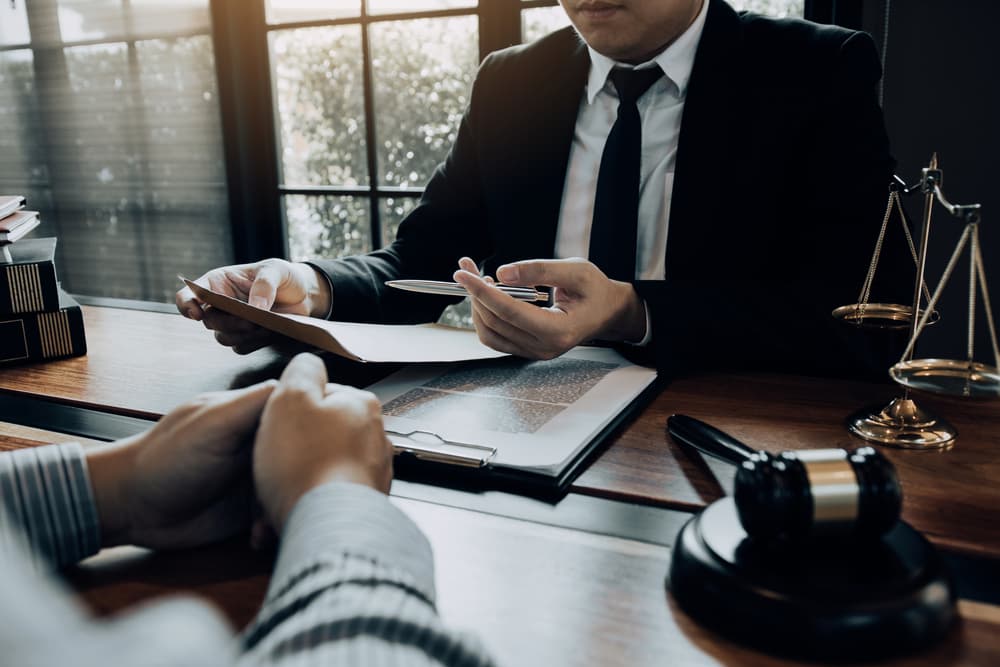Rear-end accidents are among the most common types of car crashes on the road. They occur when the front of one vehicle collides with the back of another vehicle, often resulting in property damage, injuries, and even fatalities. Determining fault in a rear-end accident can be complicated, as multiple factors may contribute to the collision. Always have a car accident lawyer evaluate what happened and who should be liable.
The Presumption of Fault in Rear-end Accidents
The presumption of fault in rear-end accidents is a well-established legal principle most states adopt. The presumption stems from the principle that the rear driver must maintain a safe following distance and be ready to stop if the vehicle ahead slows down or stops.
In practical terms, if you are involved in a rear-end accident and were the rear driver, you will likely be considered at fault for the collision unless you can provide evidence to rebut this presumption. This evidence may include proof that the lead driver made a sudden, unexpected stop without a valid reason or that a mechanical failure or defective part in your vehicle prevented you from avoiding the collision.
The presumption of fault in rear-end accidents is not absolute. There are some situations in which the lead driver may be found wholly or partially at fault for the collision, such as when they suddenly stop without a valid reason or fail to maintain their vehicle safely.
However, in most cases, the rear driver will be presumed to be at fault for a rear-end accident, and it will be up to them and their car accident attorney to provide evidence to rebut this presumption.
Sudden Stops and Unexpected Actions

Sudden stops and unexpected actions by the lead driver can be a major contributing factor to rear-end accidents. When a lead driver makes a sudden stop without a valid reason, such as slamming on their brakes to avoid hitting an animal or because they missed their turn, they can catch the rear driver off guard and make it difficult for them to avoid a collision.
The rear driver may argue that they had insufficient time to react to the lead driver's sudden stop, especially if they failed to use their turn signals or brake lights to warn the vehicles behind them. This argument may be particularly compelling if the lead driver's actions were negligent or reckless, such as stopping in the middle of a highway or swerving across multiple lanes of traffic.
However, even if the lead driver made a sudden stop without a valid reason, the rear driver may still be found partially or wholly at fault for the collision if they were not maintaining a safe following distance or paying attention to the road at the time of the accident. All drivers must exercise reasonable care and caution when operating their vehicles, regardless of the actions of other drivers on the road.
If a sudden stop or unexpected action by the lead driver causes a rear-end accident, your lawyer can gather as much evidence as possible to support your claim. This may include witness statements, traffic camera footage, and vehicle damage reports that can help demonstrate the lead driver's negligence and the circumstances of the collision.
An experienced car accident attorney can investigate the accident and build a strong case to support your compensation claim. An attorney can also negotiate with insurance companies on your behalf and represent you in court, if necessary, to help ensure that you receive the full compensation you are entitled to under the law.
Multi-Vehicle Accidents and Chain Reactions
Multi-vehicle accidents and chain reactions can be some of the most challenging rear-end collisions to resolve. These accidents occur when the force of an initial rear-end collision pushes the lead vehicle into the vehicle in front of it, causing a domino effect that can involve multiple vehicles and drivers.
In a multi-vehicle rear-end accident, determining fault can be difficult and time-consuming because you must carefully examine each driver's actions to assess their contribution to the crash. Generally, the driver of the rearmost vehicle, who initiated the chain reaction, is often found to be primarily at fault for the collision since they usually trigger the sequence of events.
However, there are some situations in which the drivers of the middle vehicles in a chain reaction may also be found partially at fault for the collision. For example, suppose a middle vehicle followed too closely behind the lead or failed to take reasonable steps to avoid the collision. It may be considered a contributing factor to the accident and held liable for some damages.
In addition, if the lead vehicle in a chain reaction suddenly stopped without a valid reason, or if a mechanical failure or defective part in one of the vehicles caused the initial collision, the allocation of fault may require a thorough investigation by an experienced car accident attorney.
Proving fault in a multi-vehicle rear-end accident often requires detailed analysis of evidence by all parties and insurers involved. A car accident lawyer can build a strong case to support your compensation claim, whether you were driving the rearmost vehicle or one of the middle vehicles in the chain reaction.
Mechanical Failures and Defective Parts
Mechanical failures and defective parts can be major factors in rear-end accidents, making determining fault more challenging. When a vehicle experiences a sudden mechanical failure or defect, such as a tire blowout or brake failure, it can cause the driver to lose control of the vehicle and collide with the vehicle in front of them.
The vehicle's driver with mechanical failure or defect may argue that they could not avoid the collision despite their best efforts to maintain a safe following distance and pay attention to the road. This argument may be particularly compelling if the failure or defect was sudden and unexpected and the driver had no prior warning or opportunity to address the issue.
However, even if a mechanical failure or defect was the primary cause of a rear-end accident, the vehicle driver may still be found partially at fault if they were not properly maintaining their vehicle or failed to take reasonable steps to address known issues with their vehicle. This is because all drivers must ensure that their vehicles are operating safely and promptly address known defects or maintenance issues.
In addition to the vehicle's driver with mechanical failure or defect, other parties may be liable for a rear-end accident caused by a faulty part or system. For example, suppose the defect resulted from a manufacturing error or design flaw. The vehicle manufacturer or the specific part may be liable for damages. Similarly, if a repair shop or mechanic fails to properly diagnose or fix a known issue with the vehicle, they may also be liable for the accident.
Proving Fault in a Rear-end Accident
Several key pieces of evidence can demonstrate fault in a rear-end accident. An experienced car accident attorney can gather and preserve this evidence to build a strong case.
One of the most important pieces of evidence in a rear-end accident case is the police report. This report will typically include a detailed description of the accident scene, statements from the drivers and any witnesses, and the officer's initial assessment of fault based on the evidence available at the time. While the police report is not always conclusive, it can provide valuable information and support for your claim.
Witness statements can also be crucial in proving fault in a rear-end accident. Suppose there were any other drivers or passengers who saw the collision occur. Their testimony can help establish the sequence of events and identify any negligent or reckless behavior by either driver. An experienced attorney can locate and interview witnesses to gather the necessary information to support your claim.
Photographs and video footage of the accident scene and vehicle damage can also be valuable evidence in a rear-end accident case. These visual records crucially demonstrate the impact's severity, the vehicles' positions at the moment of collision, and any additional details that the other driver or their insurance provider might challenge. A car accident lawyer can obtain and preserve this evidence and, if necessary, hire professional photographers or accident reconstructionists to document the scene.
Vehicle repair records and maintenance logs can also be important evidence in a rear-end accident case, particularly if a mechanical failure or defective part caused the collision. These records can show whether the owner maintained the vehicle properly and addressed any known issues promptly and appropriately. An attorney can obtain these records from the other driver or their insurance company and collaborate with professionals to analyze the data and identify potential liability.
Finally, black box data from the vehicles involved in the accident can provide valuable information about the speed, braking, and other factors that may have contributed to the collision. Many modern vehicles have event data recorders (EDRs) that capture this information in the seconds leading up to and during a crash. An experienced attorney can obtain and analyze this data to support your claim and demonstrate fault in the accident.
Facing Wrongful Accusations of Fault
You might know another driver caused your rear-end accident and believe you have a straightforward claim. Suddenly, however, the driver’s insurance company is disputing liability and pointing the finger at you. Whether you were the rear or front driver, this can be a disconcerting and stressful situation.
Insurance companies often try to blame claimants to reduce settlements or deny claims altogether. If this happens, you need a car accident lawyer to challenge any wrongful accusations of fault against you. They can gather and present evidence the other driver caused your accident and injuries so you receive the total compensation you deserve for your losses.
The Importance of Seeking Legal Guidance

If you are in a rear-end accident, seeking legal guidance from an experienced car accident attorney can be one of the most important steps to protect your rights and secure the compensation you need to move forward with your life.
One of the key benefits of working with an attorney after a rear-end accident is that they can investigate the accident and gather the evidence you need to build a strong case. This may involve interviewing witnesses, obtaining police reports and medical records, and working with accident reconstructionists to analyze the collision and identify any potential liability.
An attorney can also guide you through the insurance claims and negotiations that often follow a rear-end accident. Insurance companies are in the business of minimizing their payouts and protecting their bottom line. They may pressure you to accept a low settlement offer or deny your claim. An experienced attorney can explain your rights and work to secure the full and fair compensation you deserve under the law.
In addition to dealing with insurance companies, an attorney can calculate the full extent of your damages and losses resulting from the accident. This may include your immediate medical expenses, lost income, and any future costs associated with ongoing treatment, rehabilitation, or disability. An attorney can collaborate with medical and financial professionals to document these losses and ensure you receive full compensation for all your damages.
Finally, an attorney can represent you in court and fight for your rights before a judge and jury if necessary. While settlement negotiations resolve most rear-end accident cases, some may require litigation to secure the compensation you deserve. An experienced attorney can guide you through this process and advocate for your interests every step of the way.
Contact a Car Accident Attorney
If you or a loved one has experienced a rear-end accident, don't hesitate to seek the help of a skilled car accident attorney. Contact a trusted personal injury attorney today to schedule a free consultation and learn more about your rights and options after a rear-end collision. With the right legal team, you can focus on your recovery while your attorney fights for the justice and compensation you need to move forward with your life.